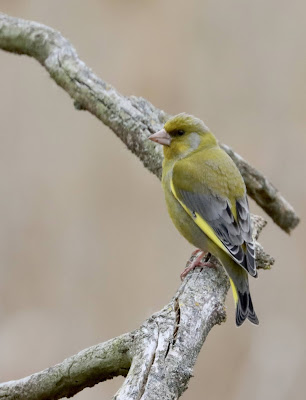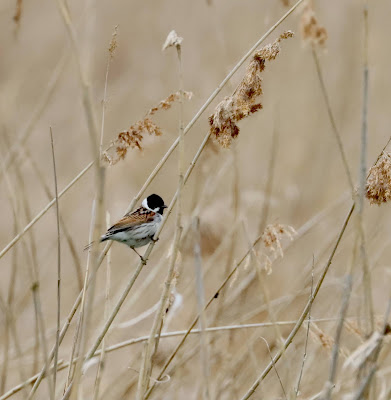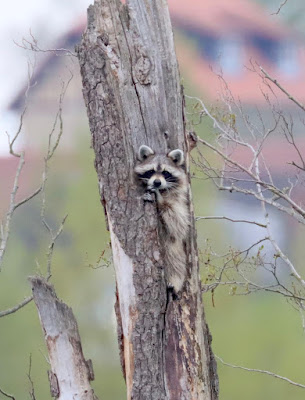Spring took an age in coming. Winter was long and hard with heavy snowfall. When eventually the snow receded and the days got longer, there was little relief. March, April and May were all uncharacteristically cold and wet. Migration was late and those birds that did arrive struggled to attain breeding condition. Added to this sorry state of affairs, the Corona Virus pandemic continued to wreak havoc on peoples' lives, employment and mental health.
One glint amidst the depression was the presence on Goslar's Steinberg of a Lesser Spotted Woodpecker. Peep, peep, peep, every time I walked the dogs who were oblivious to my happiness in detecting this little gem on my doorstep after several years of looking. Latter I was to see 2 birds, a male and a female, and I assume that they bred locally.
My first outing as such was to Frose's reed beds 70 km to the east of Goslar. A rare warm and sunny morning elicited a Bluethroat and little else. Later visits, when eventually the weather got warmer, included Grasshopper, Savi's and Marsh Warblers though the star of the show was a Racoon climbing a tree presumably looking for eggs to eat. He may have looked cute, but Racoons and alien invasive species here in Europe and cause no end of problems for native wildlife.
The only other location that I visited, apart from my local Steinberg, was the superlative Drömling and I was determined this year to overnight there in the hope of seeing some owls or even hearing some elusive Corncrakes. Therefore three extended visits produced some quite spectacular results. Barred Warblers seem to be becoming more and more difficult to locate and have vacated their former western haunts. This year I managed to located only one pair or birds and I saw no evidence of them breeding either. Using a hide, occasional 'play back' and several hours of patience, I managed to get some quite wonderful photographs including a bird in flight.
At the same site I observed a pair of Wrynecks which seem to remain quite widespread and whilst not common, are quite easy to come by. Red-backed Shrikes are of course everywhere and look quite spectacular against a sea of blossom. Finally, a close fly-by by a White Stork finished proceedings at this site.
Some of you may be familiar with the term the 'golden hour' which is that time immediately after dawn when the birds have started singing and the light is beautiful and perfect for photography - at least if the sun is shining. Icterine Warblers are quite common in the Drömling and easily located by their distinctive song usually delivered from deep within a bush. Garden Warblers are also quite plentiful and similarly difficult to get good views of. I love these birds - some plain and mild in appearance but with such a beautiful voice.
Other species observed included some Golden Oriels, notoriously difficult to photograph high up in the foliage, a spectacular Hawfinch. Anything can turn up in the Drömling!
I have long been saddened by the apparent decline of Ortolan Buntings in the Drömling. A specialty of the region and declining throughout Europe I had not seen one here for several years so I was especially pleased one morning to hear their plaintive call and to actually see a bird after all these years. I then determined to spend most of a weekend looking for them in the dry sandy farmland immediately to the north. In short in 2 or three days searching I was able to find a measly three or four birds which I suppose is better then none in the past few years. By way of a consolation prize I stumbled across a pair of Hoopoes who then proceeded to call to one another. Apparently two pairs are breeding in the Drömling this year.
Rosefinches are another specialty of the Drömling and I was fortunate to see at least one stunning male singing incessantly and affording excellent views. A superb male Montagu's Harrier surprised me one morning quartering the meadows. Two females bred here a couple of years ago but despite visiting former sites I was unable to see the male or indeed any females in the local area.

























